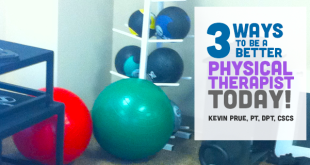Welcome to the world of prosthetic care, where every step forward is a triumph of resilience and determination. Patients with lower extremity prostheses navigate a unique journey, facing both physical and emotional challenges along the way. As healthcare providers, it's our privilege to support them on this path to recovery and empowerment.
From assessing their needs to providing ongoing education and support, every interaction plays a crucial role in their rehabilitation journey. In this comprehensive guide, we'll delve into the top 6 tips for working effectively with patients with lower extremity prostheses, ensuring they receive the care and support they deserve.
Understanding the Patient's Needs
Before we dive into the tips, it's essential to grasp the individual needs and circumstances of each patient. The Amputee Coalition emphasizes the importance of personalized care, recognizing that no two journeys are alike. By conducting thorough assessments and actively listening to their concerns, we can tailor our approach to meet their specific goals and challenges.
Establishing a trusting relationship is key, as it lays the foundation for effective communication and collaboration. Through open dialogue and mutual respect, we can empower patients to take an active role in their rehabilitation journey. Hanger Clinic offers a wealth of resources and support services, ensuring patients feel empowered and informed every step of the way.
Top 6 Tips for Working with Patients with Lower Extremity Prostheses
1. Clear Communication is Key
Effective communication forms the cornerstone of successful prosthetic rehabilitation. From discussing treatment options to addressing concerns and expectations, clear and open dialogue fosters trust and understanding. Utilize simple language and visual aids to enhance comprehension, ensuring patients feel confident and informed.
2. Educate and Empower
Knowledge is power, especially when it comes to navigating life with a prosthetic limb. Take the time to educate patients about their devices, including proper care, maintenance, and troubleshooting tips. Empower them to advocate for their needs and actively participate in their own care journey.
3. Address Emotional Well-being
Limb loss can have profound emotional implications, impacting self-esteem, body image, and overall quality of life. Provide a safe space for patients to express their feelings and concerns, and offer resources for emotional support and counseling. Remember, healing extends beyond the physical realm.
4. Ensure Optimal Prosthetic Fit
A well-fitted prosthesis is essential for comfort, mobility, and overall satisfaction. Work closely with prosthetists to achieve optimal fit and alignment, addressing any issues or discomfort promptly. Encourage patients to communicate openly about their comfort levels and mobility goals.
5. Foster Independence and Adaptability
Empower patients to embrace their prosthetic devices as tools for independence and freedom. Encourage them to practice daily activities and mobility exercises, gradually increasing their confidence and capabilities. Emphasize adaptability and resilience in the face of challenges.
6. Provide Ongoing Support
Rehabilitation is a journey, not a destination. Offer continuous support and encouragement as patients adjust to life with a prosthetic limb. Connect them with support groups, peer mentors, and community resources to foster a sense of belonging and camaraderie.
Conclusion: Walking the Path Together
In conclusion, working with patients with lower extremity prostheses requires compassion, empathy, and a commitment to excellence. By following these top 6 tips, we can empower patients to embrace their journey with confidence and resilience. Together, we can unlock the full potential of prosthetic rehabilitation and pave the way for a brighter, more inclusive future.
As we continue to evolve and innovate in the field of prosthetic care, let's never lose sight of the individuals behind the devices—their stories, their dreams, and their unwavering spirit.
References:
Malliou PC, Giannakopoulos K, Beneka AG, Gioftsidou A, Godolias G. Effective ways of restoring muscular imbalances of the RTC muscle group: a comparative study of various training methods. Br J Sports Med. 2004;38:766–772.
Reinold MM, Wilk K, Fleisig GC, et al. EMG analysis of the rotator cuff and deltoid musculature during common shoulder external rotation exercises. J Orthop Sports Phys Ther. 2004;34:385–394.
Van der Heijden GJ, van der Windt DA, de Winter AF. Physiotherapy for patients with soft tissue shoulder disorders: a systematic review of randomized clinical trials. BMJ. 1997;315:25–30.
Wilk KE. Current concepts in the rehabilitation of athletic shoulder injuries. In: Andrews JR, Wilk KE, eds. The Athlete’s Shoulder. 1st ed. Philadelphia, Pa: WB Saunders; 1994:335–368.
Kramer WJ, Ratamess NA. Fundamentals of resistance training: progression and exercise prescription. Med Sci Sports Exerc. 2004;36:674–688.
 NewGradPhysicalTherapy.com The Largest Online Resource For New Grad Physical Therapists
NewGradPhysicalTherapy.com The Largest Online Resource For New Grad Physical Therapists



















Leave a Reply Cancel reply
You must be logged in to post a comment.